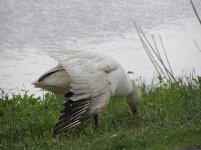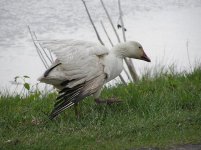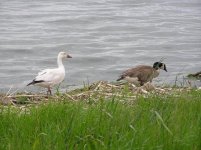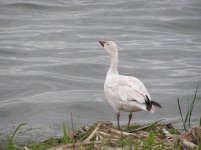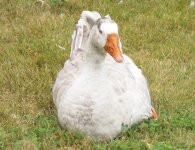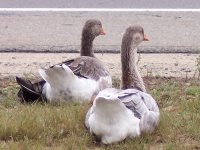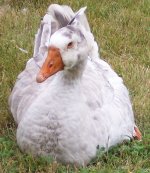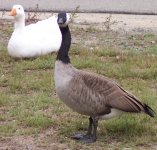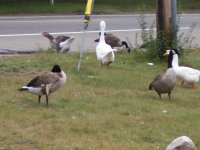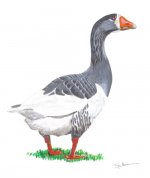My husband and I live in NY state near Montezuma National Wildlife Refuge. We visited today and had quite the experience. It took us a while to realize we were watching an immature Bald Eagle hunting for fish in the waters but that is not why I am on the internet searching for information.
We are not really birders so I hope by posting on this forum someone will be able to help us with this question. Ok, here it is...
We saw two pairs of geese at the edge of the waters only a few feet from our car. The strange thing about both pairs is that one was a Snow Goose and one was a Canada Goose. Now from what I understand by the information I was able to gather on the internet is that these two species do not really like to mingle with each other although it has not been uncommon for people to see one Snow Goose in a flock of Canada Geese.
With the first pair we saw, the Snow Goose had an injured wing. We took pictures so you guys can see what we saw. Now these geese were definately paired cuz' they were drinking together, swimming together and were a long way away from any other geese.
We are very confused, do Snow Geese mate with Canada Geese?
We are not really birders so I hope by posting on this forum someone will be able to help us with this question. Ok, here it is...
We saw two pairs of geese at the edge of the waters only a few feet from our car. The strange thing about both pairs is that one was a Snow Goose and one was a Canada Goose. Now from what I understand by the information I was able to gather on the internet is that these two species do not really like to mingle with each other although it has not been uncommon for people to see one Snow Goose in a flock of Canada Geese.
With the first pair we saw, the Snow Goose had an injured wing. We took pictures so you guys can see what we saw. Now these geese were definately paired cuz' they were drinking together, swimming together and were a long way away from any other geese.
We are very confused, do Snow Geese mate with Canada Geese?




